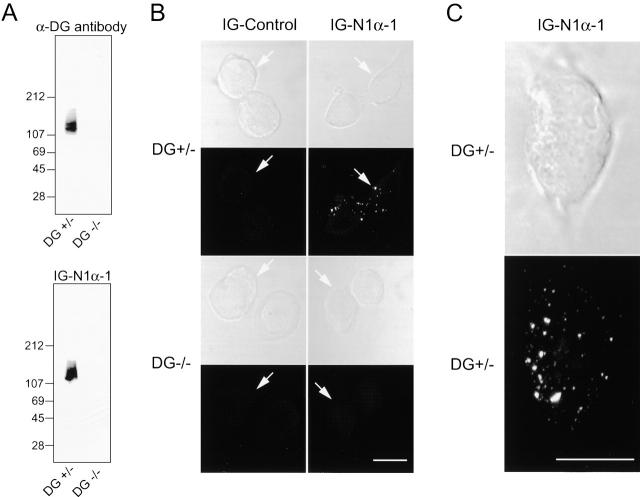Figure 5.
Binding to neurexin 1α to ES cells that express or lack dystroglycan. (A) Neurexin overlay analysis. Proteins were isolated by WGA affinity chromatography from ES cells that are heterozygous (DG+/−) or homozygous mutant (DG−/−) for the dystroglycan gene and analyzed by immunoblotting with an antibody to α-dystroglycan (top) or by the neurexin overlay assay using Ig–N1α-1 (bottom). Note that the neurexin Ig fusion protein only reacts with α-dystroglycan in the heterozygous mutant but not the homozygous mutant ES cells. (B and C) Cell surface binding. Cultured heterozygous and homozygous mutant ES cells containing or lacking dystroglycan (DG+/− or DG−/−, respectively) were reacted with Ig–control or Ig–N1α-1. Phase–contrast images are shown above the corresponding immunofluorescence images for each condition; cell boundaries are identified by arrows. Note that both dystroglycan and neurexin 1α are required to obtain cell surface reactivity. C depicts a high magnification view of a single dystroglycan-positive ES cell reacted with Ig–N1α-1 to highlight clustered neurexin/dystroglycan complexes on the cell surface. Bars, 10 μm.

